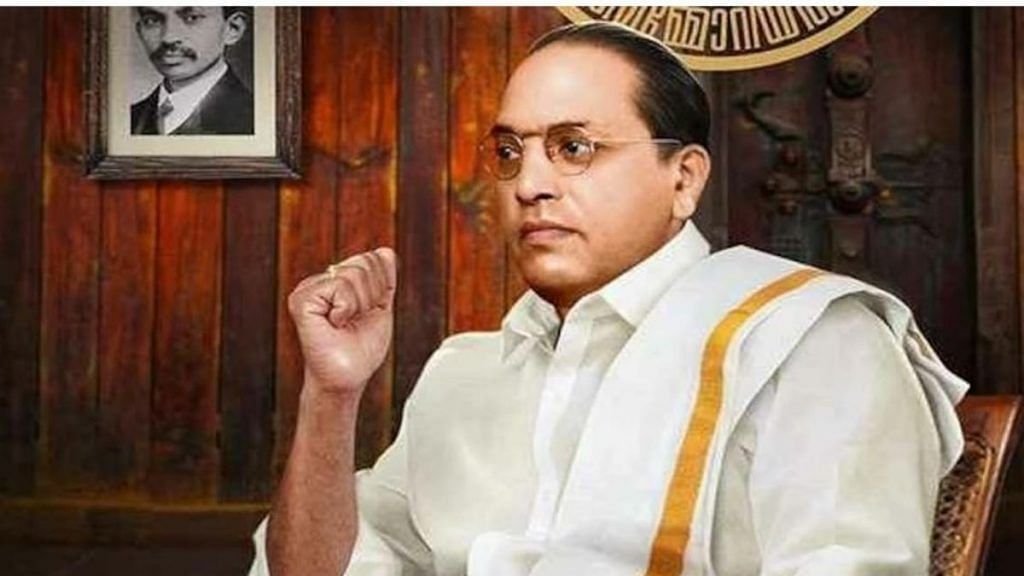Being a great man’s wife is an ordeal, and this I have learnt from personal experience. Others may not understand the kind of circumstances that a great man’s wife has to confront by being told about them. Add to that the fact that our circumstances were so unusually different! I belonged to the so-called savarna class, the upper caste, and Dr Ambedkar belonged to the mahar community that was counted among the ati-shudra, the untouchables, by the Hindu religious institution. Since we came from extremely different strata of society, our social and domestic circumstances were extremely different too. That two persons coming from such different circumstances, growing up in such different environments and working in such different professions should have got married is a hugely surprising event. The reason why we did get married was that we both believed in the religion of equality and our ideal was Mahatma Gautam Buddha who gave to the world the message of peace and non-violence. As Saheb himself wrote to me in one of his letters, ‘One soul saw the other soul, both recognized a common identity . . .’ This was how our hearts met.
The second issue was the difference in age between the two of us and the third was Dr Ambedkar’s ill health and the chronic ailments deeply embedded in him.
But neither our different social backgrounds, nor the difference in age nor again his ill health and his chronic illnesses came in the way of our marriage. The doctor in me was aroused to boundless sympathy, and I accepted Dr Ambedkar’s proposal of marriage. When I first met Dr Ambedkar, his health was not good at all. His body had been hollowed out by chronic ailments, such as diabetes, rheumatism and blood pressure, and he was altogether lonely. My heart rose up at the sight of his physical health and his loneliness and filled up with great compassion. The doctor in me came to life and mandated that this man be provided proper medicines and a physician’s help. It was this realization that made me instantly accept his proposal of marriage. The responsibility of the country’s Constitution lay upon him; therefore, it was imperative that his health and treatment be looked after for the performance of his historical task. Now, when I think back to my acceptance of his proposal, I sincerely feel that I responded positively only because I was a doctor. What response I would have given if I had not been a doctor is impossible for me to say even now. But despite our most unusual circumstances, we accepted each other and treasured each other like something precious.
Also read: How Ambedkar was both ‘Dalitised’ and ‘Brahminised’ by Indian ruling class to own history
When Dr Ambedkar made his choice of me, I didn’t have the vaguest idea of the kind of circumstances I would have to confront. I was his wife as well as his doctor, making it absolutely necessary for me to take care of his food, medicines, rest and everything else fastidiously. We got married on 15 April 1948, and discipline and sense arrived in Dr Ambedkar’s daily routine. The handling of his daily schedule sometimes made it inevitable that some leaders and workers were denied the opportunity of meeting him. It was quite possible that some of them got upset, but I really had no choice except to suffer their resentment. It is unfortunate that these people did not carry sharp enough sensibilities. The Constitution of independent India was altogether the creation of Dr Ambedkar. He worked on it for sixteen to eighteen hours every day at a stretch. He would say, ‘I am repaying my debt to the people of this soil.’ When I got married to Dr Ambedkar, I had simply one thing in mind— complete surrender; walk every step with him like his shadow for the sake of the work he had undertaken and give him company in every sense of the word. I feel grateful that till his last moment I stayed with him like his shadow with body, mind and soul.
Dr Ambedkar was a pure, personified paragon of public life. We had nothing in our life that we could not lose.
After Dr Ambedkar’s passing away, the Dalit leaders of those times did not want any obstructions from the members of the Ambedkar family. Accordingly, they created a rift between Yeshwant and me. They made him the president of the Bauddha Mahasabha and got him busy in touring and proselytization, and systematically spread poison in the Dalit community by conspiring to create suspicions against me related to Dr Ambedkar’s death and keeping these suspicions alive. Their machinations are evidence of how low people can stoop to serve their own ends and to gain political power. This was how some self-seekers systematically performed the ‘great deed’ of creating a rift in the Dalit community and between us, mother and son. This plot was put into place to have me thrown out of the political stream that Dr Ambedkar had intended for me. From the domestic and political perspective, it was a terrible thing to happen because, in my opinion, it brought rack and ruin upon the community. These self-serving Dalit leaders wanted to raise a storm against me so as to separate me from the community. It was for furthering this despicable effort that they raised the demand of getting the cause of Dr Ambedkar’s death probed.
